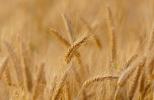H2020 ReMIX Project: Redesign of European farming systems based on species mixtures
- Type Project
- Status Filled
- Execution 2017 -2021
- Assigned Budget 5.000.000,00 €
- Scope Europeo
- Main source of financing Horizon 2020
- Project website Proyecto ReMIX
ReMIX will harness the benefits of species mixtures to design more diversified and resilient agroecological farming systems, less dependent on external inputs. Based on a multi-stakeholder approach, ReMIX will generate new knowledge with scientific credibility and social value in conventional and organic agriculture. It will address practical issues and co-design practical, off-the-shelf solutions tailored to the production of primarily commercial cereals under diverse soil and climate conditions in the EU. ReMIX:
- It will overcome barriers to stimulating the adoption of species mixes by farmers and in agri-food chains.
- It will unravel the mechanisms of plant-plant interactions to maximize resource efficiency.
- It will determine the role of species mixtures in controlling diseases, pests, and weeds and mitigating yield damage.
- It will demonstrate the role of species mixtures in enhancing the provision of ecosystem services and developing resilience to biotic stress.
- You will identify key traits and develop new breeding and phenotyping methods and tools tailored to species mixtures.
- It will generate new breeding material adapted to mixtures of grains, legumes and cereals.
- You will develop generic rules for assembling species for efficient commercial crop production using process-based simulation models.
- It will develop new management techniques to optimize the performance of species mixtures.
- It will optimize configurations and specifications for agricultural machines for harvesting and separating grain.
- It will develop a toolkit, an educational serious game, and technical brochures for farmers and advisors.
The project will range from specifying end-user needs and co-designing field and on-farm experiments to demonstrations and evaluation of new varieties and practices. ReMIX will contribute to the adoption of productive and resilient agricultural systems based on plant diversity, increasing the production and competitiveness of legumes in the EU, and promoting healthier diets based on plant proteins from cereals and legumes.
Local MAP activities highlighted that the socioeconomic context is a determining factor for the type of species mixture cultivated, in contrast to the information generally found in the scientific literature, which focuses rather on the mechanistic understanding of interspecific interactions. The "four Cs" approach (Competition, Complementarity, Cooperation and Compensation) was used to analyze the final outcome of the underlying ecological interaction mechanisms between plants and between plants and environments. Differences in plant characteristics and the partial separation of the period during which two or more species are grown together are the main drivers of niche differentiation and/or facilitation that contribute to increased yield or greater resource use efficiency in intercropping.
There is still a lack of information on the mechanisms involved in species mixtures to reduce weeds, pests, and animal diseases, and thus contribute to reducing the need for pesticides. Indeed, contrasting results have been obtained in field experiments on the effects of intraspecific and interspecific mixtures on biotic interactions caused by pests and beneficial organisms. New breeding ideas for intercropping have been developed: the theory of hybrid breeding for maize, based on "general mixing ability" (GMA), and "evolutionary plant breeding" (EPB) methods.
Key traits and defined ideotypes for good performance in species mixtures were identified, assessment tools for the performance of species mixtures were developed, existing varieties were evaluated to estimate their mixing ability, and the genetic gains of new improvement schemes, which will include key trait, GMA, and EPB approaches, were estimated and compared. Modeling was used as a key tool to represent the functioning of species mixtures. Different types of models were developed: plant structural-functional models, classical process-based crop models (STICS, Florys) adapted for intercropping, empirical models that directly use experimental data, and qualitative expert-based models. The simulations illustrated the potential for species mixtures to adapt better to variable water availability than monocultures, and the role of plant trait combinations that confer high yields, high resource use efficiency, good pest control, and high productivity and resilience to increased weather variability caused by climate change. Practical information on intercropping was also generated by compiling information from the results of ReMIX and many other past and present EU and national projects into a toolkit accessible to all (www.agrodiversity.eu).
Specific guidance was provided on configuring combine harvesters for intercropping, thus solving a major technical problem. Prototypes of decision support tools and training materials, such as the Interplay serious game and Ecosystemix for ecosystem service assessment, were designed and validated with farmers and advisors. Dissemination activities were achieved to reach a wide range of audiences: i) farmers, advisors, stakeholders, and end-users through the organization of project events such as MAP workshops and trainings and 29 practice briefs; ii) scientists and policymakers with the organization of two final conferences in collaboration with the twin project Diversify; iii) students with a one-week virtual training school on intercropping; iv) the general public and citizens with the use of social media (Twitter, Facebook groups), a website and newsletters, and a YouTube channel to broadcast project videos.
ReMIX aimed to analyze and optimize the performance of species mixtures, also known as intercropping, to help design sustainable and diversified cropping systems for both conventional and organic agriculture. The species mixtures studied were primarily cereals and grain legumes.
Eleven multi-stakeholder platforms (MSPs) were established in ten countries to demonstrate the performance potential and appeal of species mixtures. The MSPs provided a comprehensive overview of promising species mixtures, integrated into local negotiations and adjustments by relevant stakeholders, ensuring the development of effective solutions tailored to the socioeconomic context in which farmers operate. Several knowledge syntheses, new experimental studies, and modeling studies have been conducted to determine how plant traits (e.g., root architecture and canopy morphology), cultural practices (e.g., plant density), and the environment (N, P, and water availability, light quality) influence the performance of species mixtures, compared to monocultures, in capturing abiotic resources and controlling pests, diseases, and weeds.
New ideas and specific concepts were developed to support breeding for intercropping. To the extent possible, we attempted to translate scientific results into practical tools and synthetic information disseminated not only to farmers, advisors, and other stakeholders in the agricultural sector, but also to policymakers.
ReMIX will exploit the benefits of species mixtures to design more diversified and resilient agroecological herbaceous cropping systems, less dependent on external inputs. Based on a multi-stakeholder approach, ReMIX will produce new knowledge that is scientifically credible and socially valuable in conventional and organic agriculture.
It will address practical issues and co-design practical, off-the-shelf solutions tailored to the production of primarily commercial cereal crops under diverse pedoclimatic conditions in the EU. ReMIX will: overcome barriers to stimulate the adoption of species mixtures by farmers and in agri-food chains, unravel the mechanisms of plant-plant interactions to maximize resource use efficiency, determine the role of species mixtures in controlling diseases, pests and weeds and alleviating yield damages, demonstrate the role of species mixtures in improving the provision of ecosystem services and building resilience to biotic stress, identify key traits and create new breeding and phenotyping methods and tools tailored to species mixtures, generate novel breeding material tailored to mixtures of cereals, legumes and grains, develop generic rules for assembling species for efficient cash crop production using process-based simulation models, develop new management techniques to optimize the performance of species mixtures, 9) optimize the settings and specifications of agricultural machines for harvesting and sorting grains, and develop a toolbox, an educational serious game and booklets technicians for farmers and advisors.
The project will range from specifying end-user needs and co-designing field and on-farm experiments to demonstrations and evaluation of new varieties and practices. ReMIX will contribute to the adoption of productive and resilient agricultural systems based on plant diversity, increased legume production and competitiveness in the EU, and healthier diets based on plant proteins from cereals and legumes.
New research aims to promote the use of intercropping across Europe and, in doing so, help ensure a more sustainable and responsibly sourced food production and distribution system. Consumers are increasingly aware of how their purchasing actions impact the environment and their health. As such, they demand more sustainable and responsibly sourced solutions, and the food industry is no exception. Species mixtures help meet this demand. “Species mixtures ensure that future farming systems can meet both policy requirements and consumer concerns about the food they eat, their health, and the environment,” explains Jean-Noël Aubertot, a researcher at the National Research Institute for Agriculture, Food and Environment (INRAE) in France. According to Eric Justes, a researcher at CIRAD, species mixtures—also known as intercropping, crop associations, or plant teams—are an agricultural practice that increases crop productivity while reducing their environmental impact.
The practice can help limit the impact of pests, diseases, and weeds, all without the need for environmentally harmful pesticides. With support from the EU-funded ReMIX project, both Aubertot and Justes, along with their colleagues, are working to analyze and optimize species mixtures. “With the aim of boosting intercropping in Europe, ReMIX translated scientific results into practical tools and information for farmers, advisors, agricultural stakeholders, and policymakers,” adds Aubertot. Modeling and Simulations The ReMIX project conducted much of its research using models and simulations. “The simulations illustrated the potential for species mixtures to better adapt to variable water availability than monocultures,” notes Aubertot. “They also highlighted the role of plant trait combinations in achieving high yields, greater resource efficiency, and increased resilience to pests and climate change.” The researchers also developed several new ideas for intercropping improvement.
For example, they developed a novel theory that uses general mixing ability and evolutionary plant breeding methods to adapt breeding schemes to intercropping. Furthermore, the project identified several key traits for good performance in species mixtures and developed methods for assessing the performance of these mixtures. No one-size-fits-all solution. But perhaps the most important outcome of the project is the understanding of how the type of cropping mixtures used depends greatly on the socioeconomic context of the farm. In other words, there are no one-size-fits-all solutions for intercropping; local adaptations are required. “We showed that the design of intercropping—in terms of the component species, management, and configuration—must be tailored to local demands, aspirations, and possibilities,” explains Justes. “This requires taking into account the diversity of European production situations, not only in terms of pedoclimates and landscapes, but also in terms of the area’s socioeconomic context and the realities of local markets.”
A practical toolbox Based on this finding, along with other results, including those from other national and EU research, the project created a practical toolbox for achieving best practices in intercropping. “To ensure that our solutions are useful and meet real-world needs, they were all designed and tested with the support of farmers and other stakeholders,” notes Aubertot. The website www.agrodiversity.eu (toolbox available online) includes, for example, specific guidance on the proper setup for using combine harvesters during intercropping. Users can also find a variety of decision support tools, educational materials, an ecosystem services assessment tool, and even an interactive game on intercropping. ReMIX is also a founding partner of the European Crop Diversification Cluster, which will further boost not only the project’s work but also the use of intercropping across Europe.
Species mixtures are critical for future agricultural systems to meet policy requirements and consumer concerns about the relationship between the food they eat and their health, as well as the environmental and ecological impacts of the cultivation practices used to produce it. Through a multi-stakeholder approach, ReMIX has fostered localized, independent, and diffuse innovation activities across Europe, which are expected to develop beyond the project's timeframe. Close collaboration with actors outside the traditional scientific community, along relevant value chains, has actively contributed to the generation of locally/regionally relevant species mixture concepts, contributing ideas, perspectives, and opinions.
This co-ownership is expected to boost the development of species mixtures. However, pioneering farmers and companies involved in this transition across various agricultural sectors are embedded in a network of actors accustomed to simplifying monoculture cultivation, and it will take time for species mixtures to become more widely adopted in European agricultural systems. Results from field experiments and meta-analyses confirmed that species mixtures generally contribute to improved abiotic resource capture and production in low-input systems. Furthermore, they often lead to improved pest, disease, and weed control in certain production situations, with specific cultivation practices, including genotype-specific effects.
For optimal support of beneficial insects, the spatial distribution of fine-grained plants is crucial, as natural enemies depend on nearby sugar sources. The synthesis of global data confirmed the significant potential of species mixtures to reduce pesticide use. We demonstrated that intercropping design—in terms of species, management, and configuration—must be tailored to local demands, aspirations, and possibilities. This requires taking into account the diversity of European production situations, not only in terms of pedoclimates and landscapes, but also in terms of socioeconomic contexts and markets. There is no one-size-fits-all solution for intercropping.
Local adaptation is required. The development of intercropping in Europe requires institutional and regulatory changes, with the potential introduction of new areas of innovation and more direct interaction with value chain actors. This will allow for the development of new products and processes that add value and improve the range of products available to consumers.
- INSTITUT NATIONAL DE RECHERCHE POUR L'AGRICULTURE, L'ALIMENTATION ET L'ENVIRONNEMENT (INRAE)







